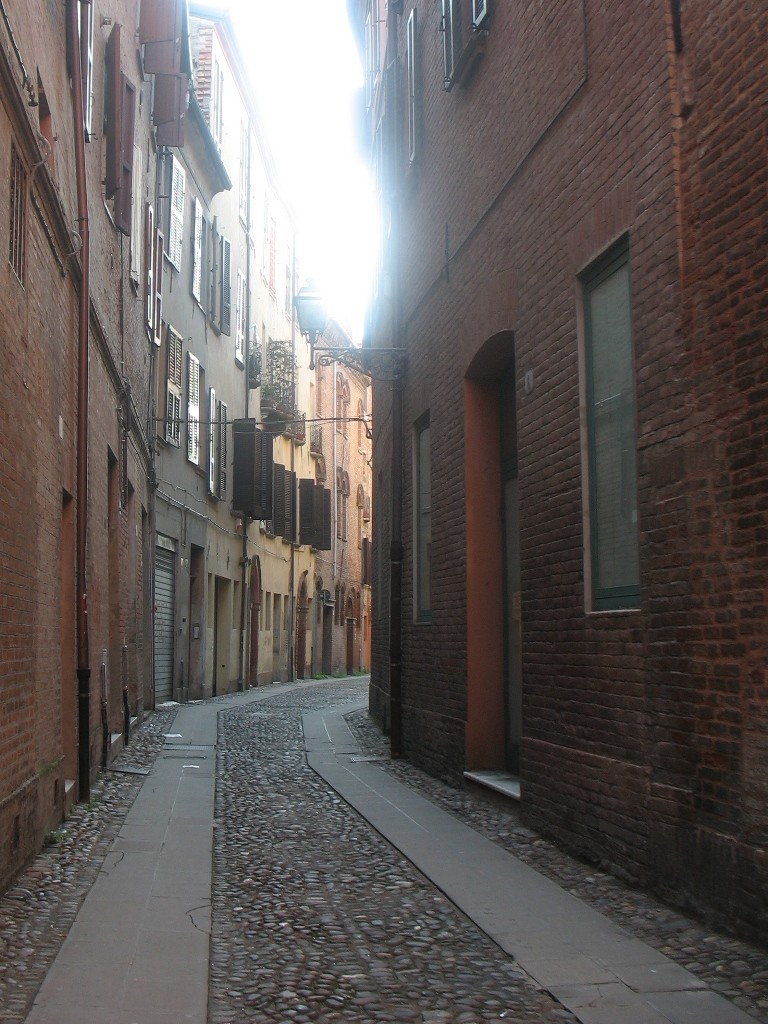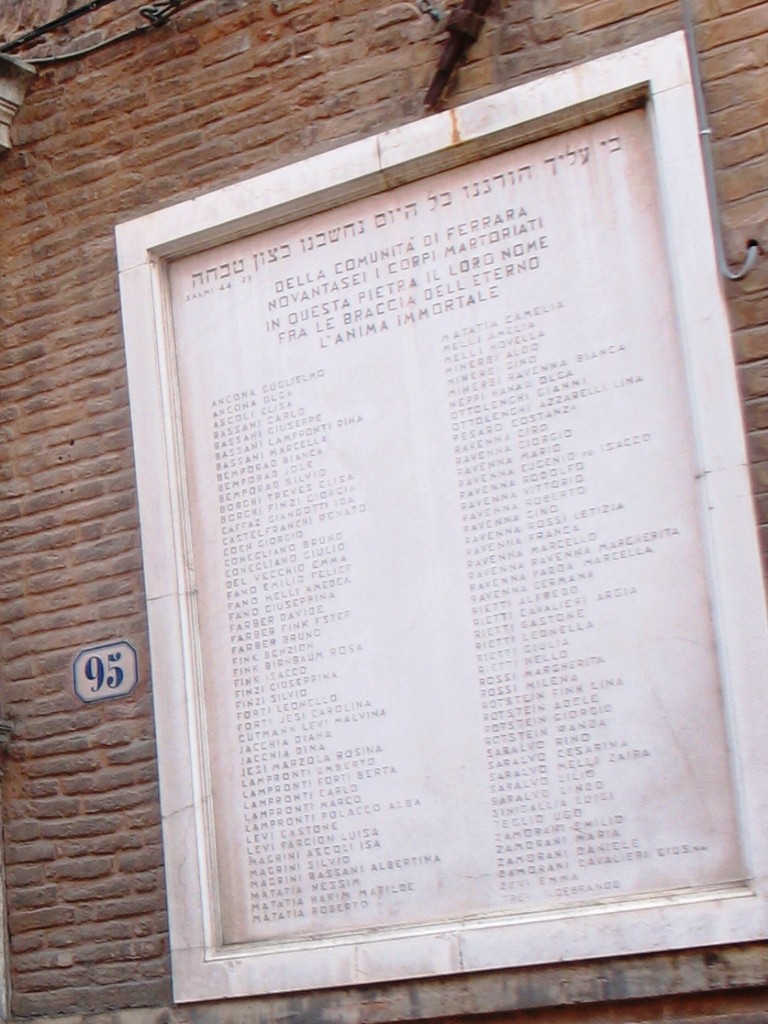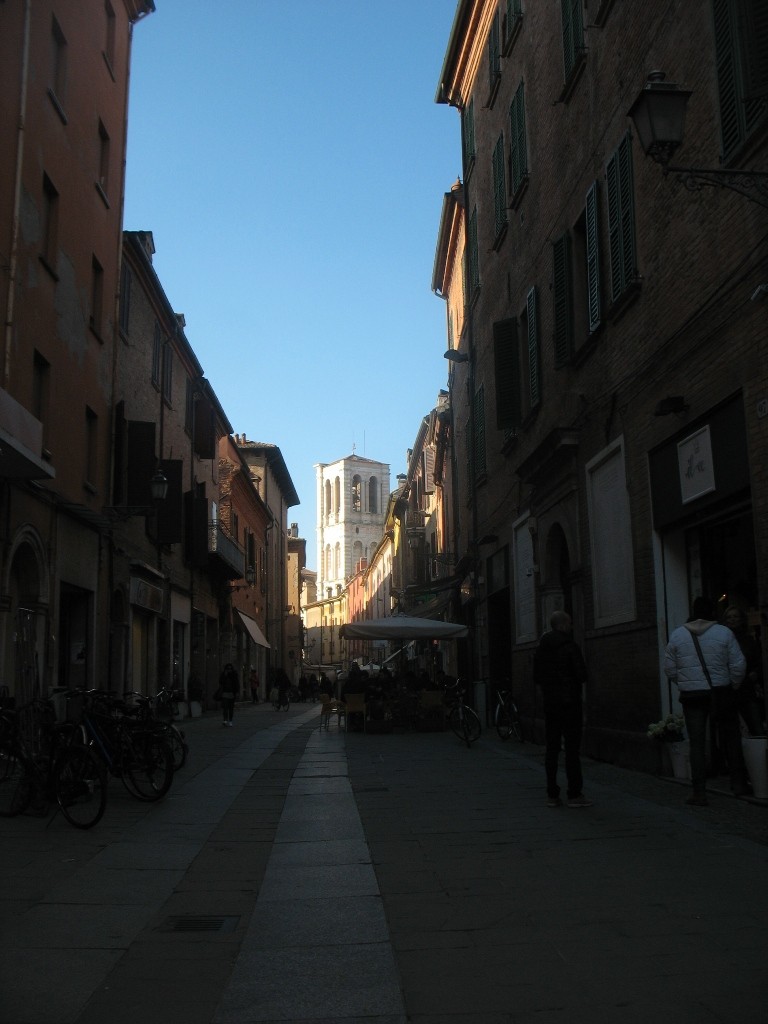The Jewish ghetto
From Palazzo Paradiso, where we had left our itinerary, following Via Scienze we will venture into the area which corresponded to the ancient Jewish ghetto. Taking the first street on the right (Via Carbone), you will dive into a maze of narrow streets, quite similar to the medieval part just left behind. The main difference consists, of course, in the fact that this is the area where the Jews were excluded after the Pope's ministers took control of Ferrara in 1598. Under the dominion of the Este family, indeed, a numerous Jew community had gathered in the town, benefiting from the liberal attitude of the dukes, who not only tolerated their presence, but even offered protection to the ones expelled from other countries. Including isolated members of the former communities from Spain, Portugal, Germany and other Italian countries, therefore, the local Jew community grew insomuch as, during the 16th century, it reached the considerable number of 2, 000 components (while the population of the town was around the 35, 000 inhabitants). As it has been said, things changed dramatically after the end of the dukedom.

Ending up very close to Via delle Volte, which has already been described, you will then turn right into Via Ragno, and again, after a few metres, in Via San Romano. Although, you will go along this ancient street for a short time, leaving it for Via Vignatagliata, on the right. From now on you will go along the streets included in the old ghetto, the area, originally enclosed by four metal gates, where the Jews have lived for more than two centuries (from 1627 to 1861, with few interruptions). Walking along the street, you will appreciate buildings dating back to the 14th century, some of which showing fine decorations. Through a passage called Piazzetta Lampronti (from the name of one of the most eminent members of the Jew community), you will then go on along another characteristic lane, Via della Vittoria. Don't forget to have a look around and notice the friezes and the small balconies in wrought iron adorning the houses.

Once reached the end of the street, you will be in Via Mazzini, one of the most animated arteries of the centre. Its numerous shops include modern clothes stores, but also a few traditional workshop, some of which of great interest. Together with the coffee bars whose outdoor area literally invades the street, they contribute to create a lively atmosphere which makes it really unique. Although, among this modern guise of wellness and tranquility, the marks of a dramatic past may still be detected. A few steps on your right, indeed, will lead you to the building marked with the street number 95. Though at first sight it may appear a common house, it is indeed the entrance to the synagogue, which has been the place of worship for the local Jew community since the end of the 15h century and is still in use nowadays. Next to the entrance, two commemorative stones have been placed as a memorial for the 156 Jews who in 1944 were deported to the German concentration camps. Only 5 of them managed to return to Ferrara. Besides the synagogue, the building also houses the Jewish Museum, preserving ancient documents, decorations and liturgical objects. It is possible to visit both the museum and the synagogue, in compliance with the limitation imposed by the worship celebrations.

Photo gallery
Content available in other languages
- Italiano: Il ghetto Ebreo
- Português: O gueto Judaico
- Español: El gueto judío
Want to have your own Erasmus blog?
If you are experiencing living abroad, you're an avid traveller or want to promote the city where you live... create your own blog and share your adventures!
I want to create my Erasmus blog! →


















Comments (0 comments)